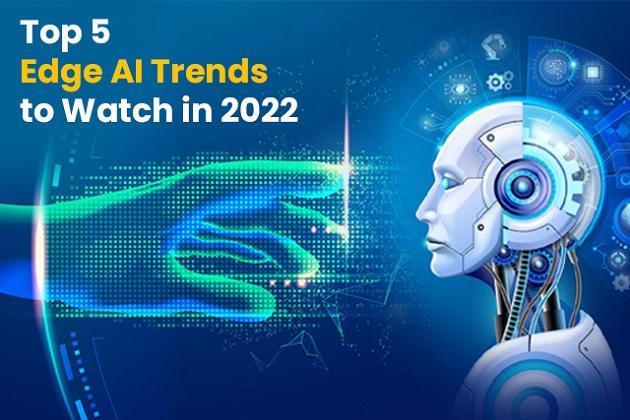The pandemic, the need for more efficient corporate operations, and major advancements in the Internet of Things, 5G, and AI contributed to a significant increase in the need for edge computing in 2022.
In May, more than 94% of CEOs questioned by IBM said that they would deploy edge computing over the next five years. More than ever, Edge AI Trends — the fusion of edge computing with artificial intelligence — is required for everything from smart hospitals and cities to cashier-less stores and self-driving automobiles.
Due to the continuing epidemic, businesses have been affected by logistical issues, staff shortages, and inflation. As a bridge between people and machines, what is AI computing and edge AI solutions may help enhance forecasting, workforce allocation, and product creation and distribution.
In 2022, NVIDIA predicts the following top five Edge AI Trends:
1. Industrial IoT and AI solutions are becoming more intertwined:
Another area where new edge AI applications are having an impact is the intelligent factory. DeAccording to the same Gartner analysis, deep learning will be used in over 65 percent of edge use cases by 2027, up from less than 10 percent in 2021, according to the same Gartner analysis.
To perform inspections and foresee future maintenance needs, factories may integrate AI applications into cameras and other sensors. Detection is just the first step. The sooner an issue is found, the better.
Anomalies and flaws may be detected by AI programs, which then notify human operators so that they can take corrective action. However, real-time reactions are made feasible by linking the AI inference application with the IoT platforms that operate assembly lines, robotic arms, pick-and-place machines for safety applications, and other use cases where immediate action is necessary.
Custom development is required for the integration of these apps. It’s expected that AI and conventional IoT management systems will work together to make it easier to use AI training at the edge in industrial settings.
2. IT turns its attention to edge management:
Despite the growing need for edge computing, installations are still in their infancy. Managing edge AI trends in production will fall under the purview of IT departments. Although, according to a recent Gartner report, Edge solutions are increasingly managing Edge solutions, “Edge solutions have traditionally been managed by the line of business.
IT departments will use cloud-native technologies to solve edge computing’s management, security, and scalability issues. As a result, Kubernetes, a containerized microservices platform, has emerged as the most popular solution for administering large-scale edge AI trends applications.
3. The expansion of AI use cases at the edge of the market:
At the frontier of AI, computer vision has taken the lead. AI training began with image recognition, which sparked an entire industry around computer vision.
One thousand or more partners have signed up for NVIDIA Metropolis, an application framework and set of developer tools that have aided in creating computer vision AI applications since 2017.
Computer vision applications are being implemented or purchased by many businesses. As a result, computer vision pioneers will begin to seek multimodal solutions.
Edge AI solutions (AI) that utilizes many senses, such as vision, sound, and touch, are known as “multimodal AI.” Some of these more involved artificial intelligence (AI) applications call on abilities such as natural language comprehension, conversational intelligence (CI), posture estimation, in-depth inspection, and visualization.
When combined with data storage, processing, and input/output (I/O) or sensor capabilities, multimodal AI may provide real-time performance at the edge for an extension of use cases in robotics, healthcare, and hyper-personalized advertising, cashier-less shopping, concierge experiences, and more.
4 . Cloud to Edge AI Lifecycle Management:
MLS will play a critical role in facilitating data flow to and from the edge for enterprises employing edge AI. Improve model accuracy and outcomes by incorporating new, interesting data or insights from the edge, retraining the model and redeploying it to the edge, and testing applications.
Artificial Intelligence (AI) may benefit greatly from constant updates. Unfortunately, traditional software upgrades may occur just quarterly or annually.
5. AI-on-5G use is on the increase in the enterprise:
Whether in the field, on-premises, or in the cloud, the unified AI-on-5G computing architecture delivers a high-performance and secure connection fabric for seamlessly working with sensors, computing platforms, and AI applications.
Non wired settings may benefit greatly from ultra-low latency and increased security.
Also Check: Edge AI Certification
AI-on-5G will open up new use cases for edge AI:
- Automation, robotics, monitoring, and inspection are part of the “Industry 4.0” trend.
- Toll roads and car telemetry are two examples of automotive systems.
- Spaces for smart commerce: applications in retail, smart cities, and the supply chain.
Taking the Next Steps in Artificial Intelligence:
As seen in the diagram, the evolution of artificial intelligence has occurred in phases. Artificial intelligence is becoming more accessible to the general public with new tools and solutions. Powered by 5G and the explosion of IoT Industry 4.0, edge AI, what is ai computing will soon breakthrough.
In 2022, as the industry studies ways to expand from cloud to edge, more businesses will relocate their AI inference. This will boost ecosystem development.



